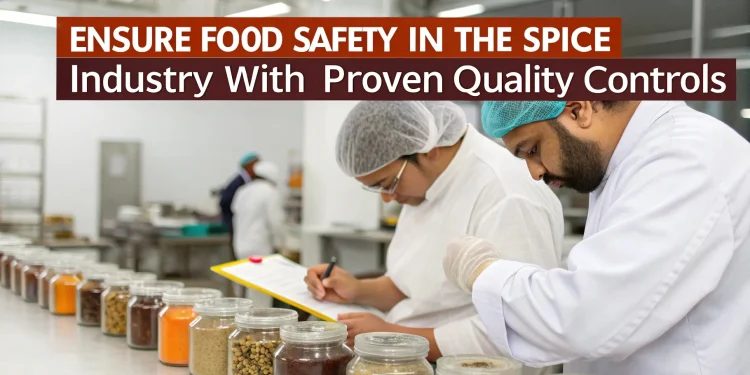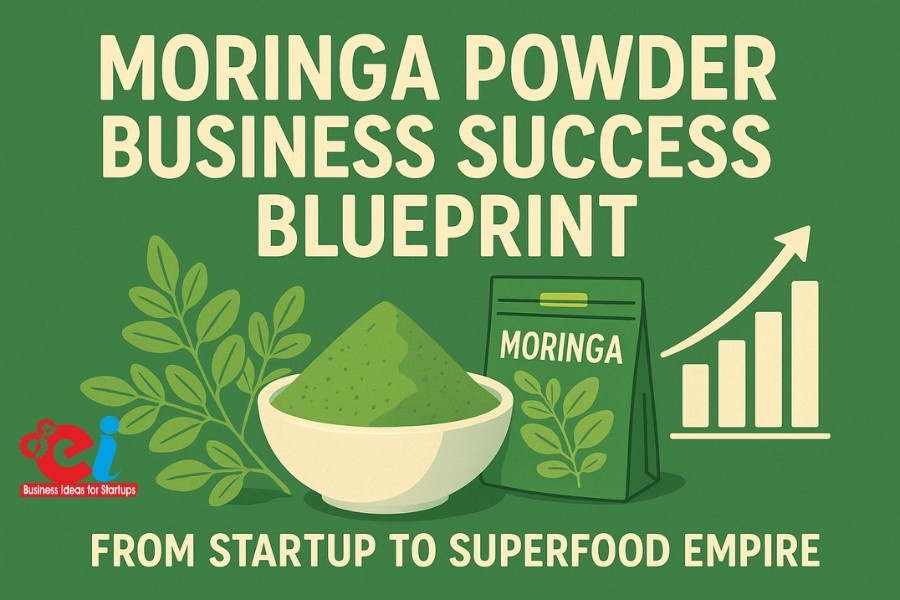Food Safety in the Spice Industry
Food safety in the spice industry now sits at the very heart of the global spice trade. With shoppers increasingly aware of hidden hazards and governments ramping up inspections, producers can no longer treat safety as a side issue. Contaminated spices have sparked costly recalls, halted shipments abroad, and bruised many well-known names. Problems run the gamut, from germs in cumin to traces of ethylene oxide in chili powder, proving that even a small lapse can have big fallout.
That’s why the NIIR Handbook on Spices, Seasonings, Condiments, Processing & Extraction is proving so useful. Written to mirror current laws, clean-room norms, and lab best practices, the book gives spice makers clear, doable steps for keeping their goods safe and protecting shoppers’ health.
Why Quality Control Is a Must for the Spice Industry
In the Spice Industry, spices are open to many forms of taint, including pesticide carry-over, heavy metals, and bacteria like Salmonella and E. coli. These threats endanger consumers and, just as importantly, the business behind the product. One batch that fails customs tests can be rejected entirely, invite legal troubles, and erode hard-won buyer confidence.
Regulatory bodies like India’s FSSAI, the U.S. FDA, and Europe’s EFSA expect spice makers to follow strict quality controls. For exporters, having solid quality checks opens the door to higher-end markets. New companies and local brands can also gain an edge, showing customers they operate professionally.
Related: Spice Trade: History, Tech & Quality Standards in One Volume
Overview of the NIIR Spice Handbook’s Approach
The NIIR Spice Handbook looks at food safety for the spice industry from every angle and breaks quality assurance into clear steps. It guides users from field notes through cleaning lines, right up to how products should be packed for sale.
At its core, the book lays out a Quality Management System that matches global standards. Readers walk through Good Agricultural Practices (GAP), Good Manufacturing Practices (GMP), and Hazard Analysis and Critical Control Points (HACCP). Helpful images, ready-made SOPs, equipment lists, and testing calendars make the advice easy to follow and put into action.
Grab your copy of the book “Handbook on Spices, Seasonings and Condiments Processing” here
Common Hazards in Spice Production
One of the most eye-opening sections in the guide is its detailed list of food-safety problems that show up in the spice industry. It breaks these problems into three big groups:
- Biological hazards – germs, fungi, and mold
- Chemical hazards – leftover pesticides, banned dyes, ethylene oxide
- Physical hazards – foreign particles
The book spells out how each of these fails food-safety rules and offers step-by-step ways to keep them away.
Pre-Harvest Quality Management Practices
Food safety in the spice industry starts on the farm. The spice handbook says growers should test the soil first to spot heavy metals and chemical residue before a single seed goes in the ground. It also urges using certified, traceable seeds and applying pesticides only as the global Maximum Residue Limits allow.
To help farmers follow through, the guide lays out Good Agricultural Practices in plain steps—irrigation checks, clean compost rules, smart pest traps, and careful record notes. With these steps, quality is built into every spice long before it ever hits the factory.
Post-Harvest Handling for Safety Assurance
After harvest, in the spice industry, spices need careful follow-up to remain safe. First, they should be dried, cleaned, sorted, and stored in a clean space. The guide offers step-by-step drying options like solar driers with fine mesh lids, diesel or electric machines with timers, and even simple humidity charts.
Sorting, whether done by hand or with a belt sorter, is shown alongside storage tips meant to slow mold and bugs. Storage drums, bins, and bulk bags must keep out water and pests, and every few weeks they should be wiped clean. Flowcharts and pictures make these tasks easy to follow.
Related: Extraction of Curcumin from Turmeric
Critical Control Points in Spice Processing
Things get trickier whenever spices are ground, blended, or packed. At those steps, tiny bits can swap between batches, risking safety. The book pinpoints Critical Control Points (CCPs) and shows staff how to check them.
Take grinding: finer flakes have more surface area, so they soak up moisture and attract germs. Packing rooms face the same worry, so every corner should stay cool and clear. Recommended tools include air curtains, HEPA fans, and separate shelves for allergens. Keeping these controls in place is what turns a spice plant into a true HACCP star.
Lab Testing and Analytical Methods Recommended
Testing turns guesswork about product quality into hard facts. The guide walks you through how to do and read these common tests:
- Microbial load tests (Total Plate Count, Yeast & Mold, Coliform)
- Heavy metals screening (lead, arsenic, cadmium, mercury)
- Pesticide residue analysis (GC-MS/MS and LC-MS/MS methods)
- Mycotoxin testing (aflatoxins B1, B2, G1, and G2)
It also gives global reference values and lists accredited labs for in-house or third-party checks. Regular testing keeps you in compliance and shows buyers, distributors, and consumers that your product is safe.
FSSAI, HACCP, and Export Regulations Explained
Following rules is more than ticking boxes; it charts a clear path for your business. The book breaks down rules from key agencies so they feel less overwhelming. You’ll find:
- FSSAI licensing steps for spice processors in India
- HACCP plan stages, from finding hazards to final checks
- Codex Alimentarius benchmarks that guide global trade
- US FDA 21 CFR Part 117 guide to safety plans and controls
By turning dense legal language into plain steps, the handbook helps new firms and seasoned processors move forward with confidence.
For more information check our project reports
Batch Traceability and Recordkeeping Systems
These days, almost every food market demands clear traceability. If a contamination scare pops up, you need to follow a spice back to the farm in minutes, not days.
The guide walks you through creating batch numbers, using digital logs, and tracking ingredients from purchase to shipping. It even lists top software for big operations and simple paper templates for tiny outfits.
Role of Packaging in Food Safety
Think of packaging as your spice’s final helmet on the journey to shelves. The book shows how to pick materials that block moisture, UV light, and oxygen—those three thieves that fade flavor.
It covers multilayer laminates, vacuum seals, inert gas flushes, and tamper-proof caps. Get the package right, and you keep the taste bright, add months to shelf life, and stay on the right side of label laws.
Staff Hygiene and Facility Sanitation Guidelines
In many plants, people remain food safety’s weakest link. To close that gap, the manual offers clean-uniform rules, hat-and-mask checklists, and short training snaps every worker can follow.
It also shows how to zone shops into clean and dirty sections, set up foot baths and hand sinks, and keep floors, walls, and machines on a regular scrub schedule. Stick to these steps, and you cut bug risk and stay ready for any surprise audit.
Audit-Ready Documentation and Self-Inspection
Because audits pop up at the most unexpected moments, being “audit-ready” starts long before the auditor walks through the door. The Handbook on Spices gives you easy-to-follow templates for:
- SOPs covering every stage of production
- Checklists to tick off during daily inspections
- Incident Log pages to capture any surprises
- Training Records that prove your team is up-to-date
- Cleaning Schedules showing when and how areas are sanitized
- Corrective Action Plans that outline fixes when problems arise
Keeping these papers organized doesn’t just keep regulators happy; they also turn into a handy toolkit your own staff can use for regular self-checks and steady improvement.
Case Studies: Brands Using the Handbook Successfully
Real stories from the field show why so many spice brands swear by this handbook. A number of small and mid-size companies followed its quality steps, sailed through tough international audits, earned organic badges, and landed export deals in markets like the U.S., U.K., and UAE.
Their wins prove that sticking to clear food-safety routines can open new sales, bump up prices, and build trust with buyers who demand the very best.
Training & Certification Pathways for Spice Units
The guide doesn’t stop at paperwork; it also lays out clear learning paths, including:
- FSSAI FoSTaC training for local laws
- HACCP and ISO 22000 food-safety certifications
- GMP and BRCGS audits that impress big retailers
You’ll find names of approved trainers, government-skills grants, and tips on how landing these certificates can make your brand stand out on the shelf.
Building Consumer Trust through Safety Transparency
In today’s crowded market, being open about product safety can give a brand real value. Brands can boost trust by adding clean-label designs, QR codes that trace each item, and quick sourcing stories. Showing safety test results, clear batch info, and trusted food-safety seals right on the package helps products pop on store shelves and online carts.
Conclusion: Safe Spices Build Stronger Brands
Food safety In the Spice Indsutry is not just a legal requirement—it’s a strategic business imperative. The Handbook on Spices, Seasonings, Condiments, Processing & Extraction is a vital resource for anyone serious about manufacturing safe, high-quality spice products. From farm to final packaging, its step-by-step approach ensures compliance, quality, and consumer confidence.


























